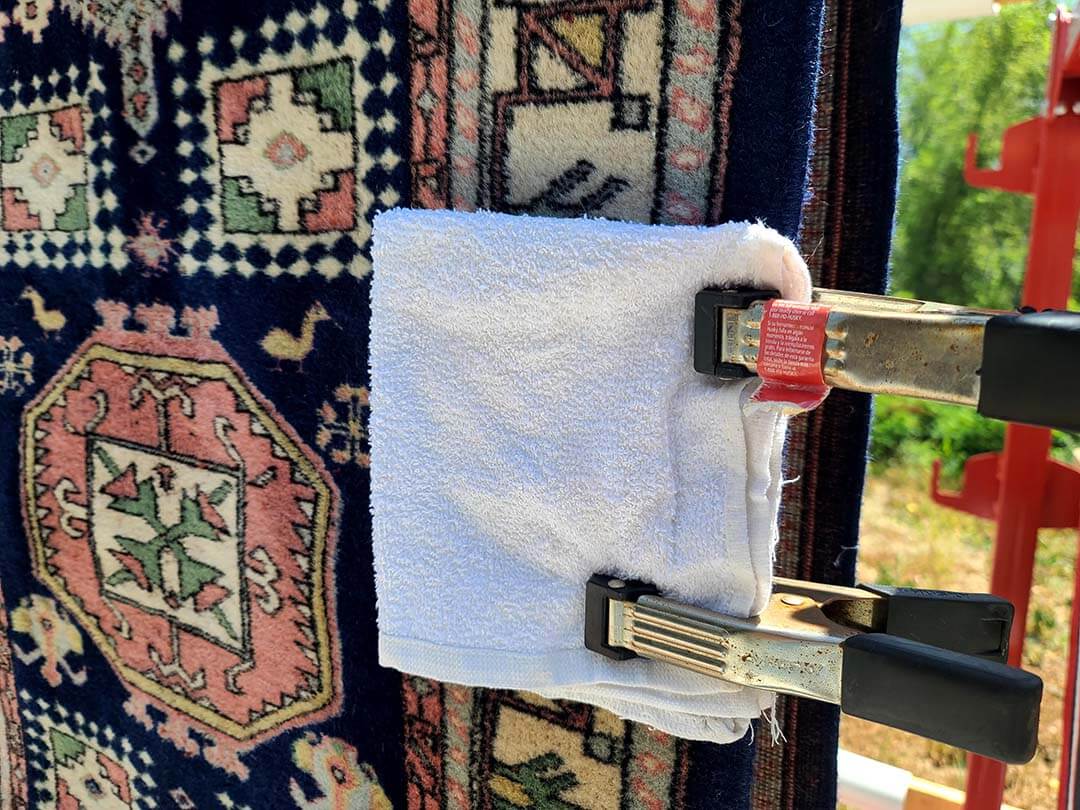Colorfastness Testing
Much of the instruction on testing for colorfastness is outdated, or just outright wrong. We are not going to spend much time on how to do it wrong, but, one thing overlooked is the differentiation between color bleeding and crocking. It is important to know the difference so that we know how to deal with the color migration issues.
Crocking test:
Choose the cleaning agent that you intend to use. Use it at the dilution and temperature that you intend to clean with. Choose the color area that you want to test. Remember that each different color is a different dye, so, you need to test each suspect color. Apply solution to the rug fibers, work in to pile. Use a dry white cotton terry towel to rub area for about 10 seconds. Check towel for dye transfer. Discount soil and fiber fragments. Judge for heavy, medium, light or no crocking.
Crocking of color is from loose unbound dye. These dyes are not at the dye site, they are in the wrong place, often at the surface of the fiber. Crocking dyes need to be removed. They need to go down the drain. Washing with high water volume and good surfactant action will often accomplish this. However, some dyes can find a home in adjacent fibers, especially lighter colored fibers with more open dye sites available. AntiDye can be used to block the dye sites from these crocking dyes, making sure that all flush off the rug and go down the drain. AntiDye performs best on wool, silk, & nylon fibers and on low water volume washing systems. Dye Release can be used to join the dye molecules together so that they become too large to fit into the dye sites or enter into the amorphous areas of fibers. Thus crocking dyes flow off the rug with the rinse water. Dye Release performs best on cellulosic fibers including rayon. And on high water volume washing systems.
Bleeding test:
Choose the cleaning agent that you intend to use. Use it at the dilution and temperature that you intend to clean with. Choose the color area that you want to test. Remember that each different color is a different dye, so, you need to test each suspect color, apply solution to the rug fibers, work into pile. Use a dry white cotton terry towel to cover the damp test area. Use a minimum of two layers of towels. This is a case where more is better. Weight down towels to ensure complete contact between the damp test fibers and the dry towels.
Alternative method:
Use a spring clamp to hold towels in place. This way you can move, or even roll up rugs that may be in the way. Leave towels in place, do not move towels until completely dry. Bleeding dyes will move during the final stage of drying. This usually takes about 24 hours. After drying is complete, remove towels and check for dye transfer. Discount soil and fiber fragments. Judge for heavy, medium, light, or no bleeding.
Bleeding dyes occur because the dyes are weakly bonded (or not bonded at all) to the fibers and or dye sites. These dyes are where they should be and we want to keep them. We just need to bond them in place better and stronger. We use mordants to bond the dyes to the fiber. With acid dyes (most common dye type for wool, silk and nylon) mordants form a strong covalent bond that can last for the entire life of the fiber. Dye Fix For Wool or Sure Color Stabilizer can be used to set acid dyes. On cellulosic fibers that do not use acid dyes, Dye Fix For Cotton can be applied to set dyes.
Caution: do not use mordants on fibers that have color bleeding damage, as it will be
more difficult to remove colors from the migrated dye.
Color fastness and testing for it is very important. Color is one of, if not the most important, feature in attracting people into liking and buying a rug. Retaining the colors of a rug is one of the most important parameters of rug care.

